As an Amazon Associate, I earn from qualifying purchases.
Follow this step-by-step tutorial to learn how simple Canning Carrots can be. A key ingredient for so many comfort foods, now your favorite soups/stews, and roasts can be ready in a flash thanks to a stash of canned carrots.
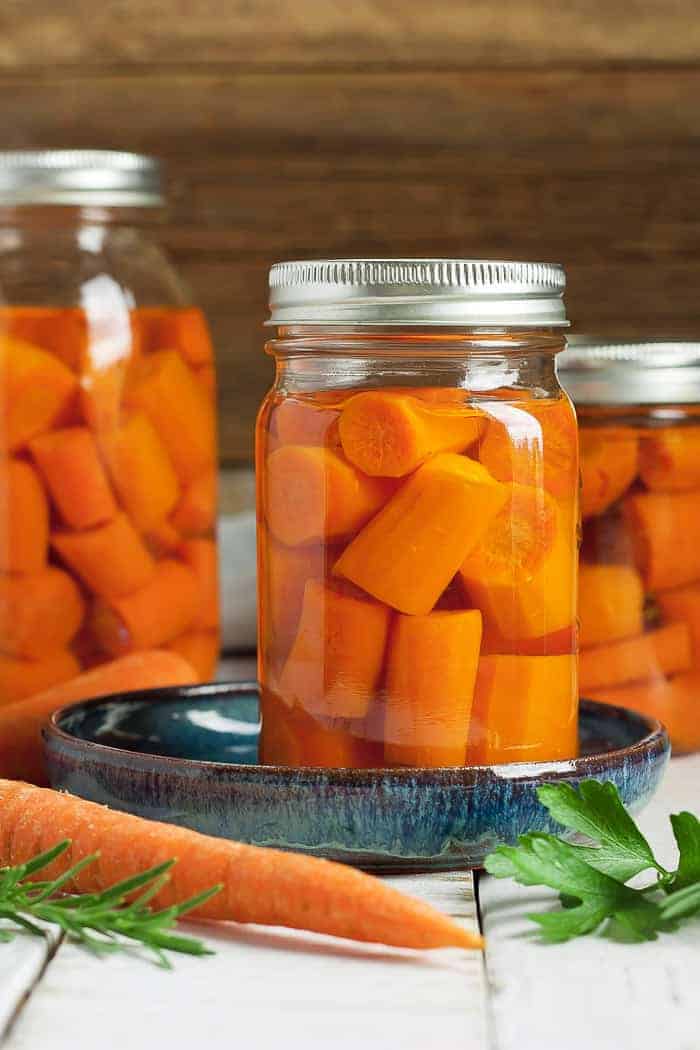
Imagine how easy meals would be if you could open up a few jars and have a homemade soup or stew on the table in just minutes. Pretty great right?
Guess what? Now you can! By learning to can carrots yourself, you open up the opportunity for lot of tasty and quick dinners.
And before we get too far into this tutorial, I have to reinforce this point: you cannot safely can carrots in a water bath canner.
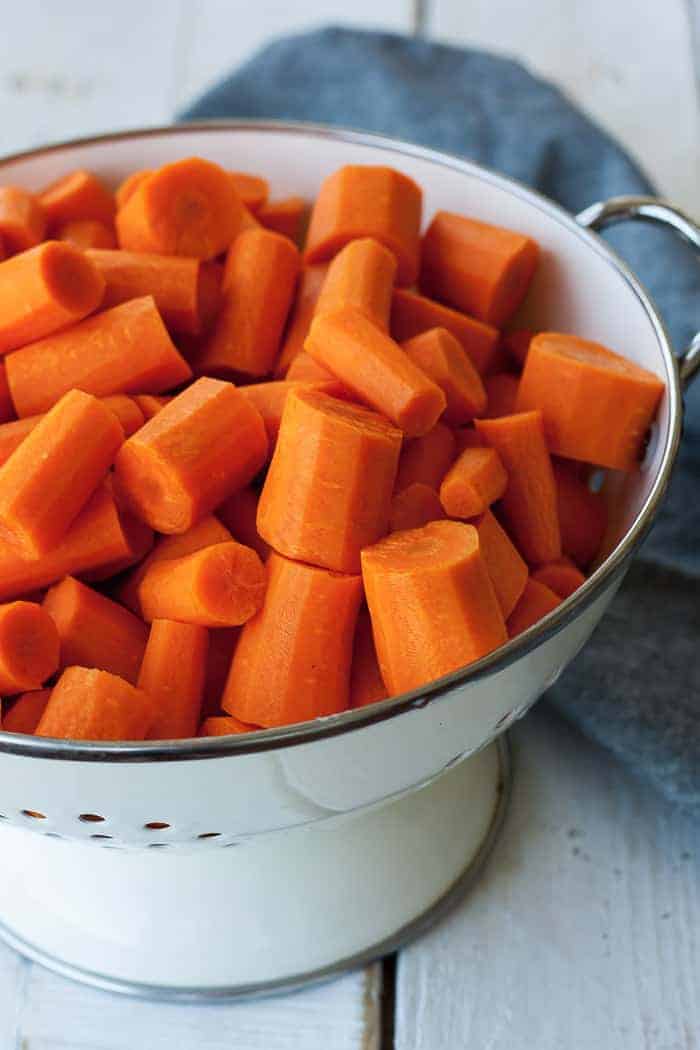
How to Can Carrots
*I’ll walk you through the process here in photos because it really helps, especially if you’re new to canning. At the bottom of the post, you’ll also find a printable and detailed recipe card.
Wash and clean your jars. It is no longer necessary to sterilize jars before canning (hurray!) but you should make sure they are preheated enough to not crack when placed in hot water.
You can put them in a clean dishwasher and run them through a quick wash cycle, or place them in a large pan with some water in a low heat oven (my lowest temp is 170˚F degrees) until you need them. I’ve even just put super hot tap water in them before and left them on the counter.
Wash your lids with hot soapy water and place them in a clean bowl for now.
Cut the tops off the carrots. Rinse and peel, and then rinse again. For seven quarts, you’ll need about 17.5 pounds. For nine pints, you’ll need 11 pounds.
RAW PACK FOR CANNING Carrots
Raw packing simply means placing the peeled and chopped (or whole) carrots in the jars without precooking them. You’ll then fill the jars with boiling water and process them in the canner.
Raw packing is much faster than a hot pack process, but there are some drawbacks. No matter how well you pack the jars, the density of the carrots will change during their time in the canner.
This often leads to something called “float” in which the vegetables will float to the top of the jar, leaving water on the bottom. You’ll also find this when you’re canning pears and canning peaches as well. There is nothing wrong with float as long as your jars are still sealed.
HOT PACK FOR CANNING Carrots
Hot packing involves cooking the carrots in boiling water for 5 minutes before packing them into jars for canning.
The appeal of hot packing are that you typically can fit more per jar, and the near elimination of float. The downside is that the veggies are exposed to heat longer which results in a slightly softer carrot.
If you are hot packing, add the carrots to a pot of boiling water and let them cook for 5 minutes. If you are not hot packing, allow 8 (ish) cups of water to come to a boil in a pot or kettle.
Add 3 quarts of water to your pressure canner and put it on a burner set to high. Make sure there is a canning rack in the bottom of the canner.
Add the carrots to the jars. You really want to pack them in there. Pro tip: gently tap the jar often on the counter as you add the carrots to allow them to settle and make room for more.
Using a canning funnel, carefully and slowly add the boiling water, leaving 1-inch of headspace.
Using a long utensil (I prefer a plastic chopstick), remove all the air bubbles from the jar.
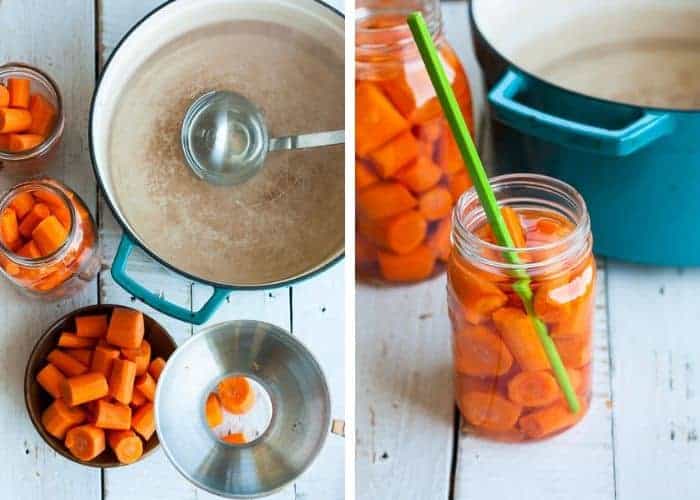
Clean the rim of the jar very well with a hot damp rag. Any food debris left on the rim may impact the seal of the lid in the canner.
Place a clean lid on the jar. Add a ring, and tighten to fingertip tight.
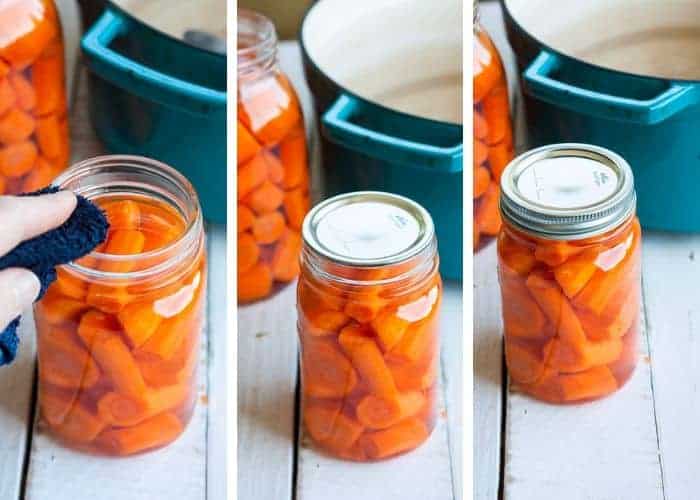
Using canning tongs, place the jars in the canner.
Lock the lid. Soon, steam will start coming through the vent pipe (I call it the steam chimney). Allow the steam to pass through for about 10 minutes. Then put the pressure regulator (I call it the chimney cap) on top.
Pretty soon, the air vent will pop up. That is a sign that you’re starting to build pressure inside the canner. Get excited, nerd!
Under normal conditions, carrots need to be pressure canned at 11 pounds of pressure for 25 minutes for pints and 30 minutes for quarts. See the chart below for any changes to processing times.
Pressure Canning Carrots in a Dial-Gauge Pressure Canner
| Canner Pressure (PSI) at Altitudes of | ||||||
| Style of Pack | Jar Size | Processing Time | 0-2,000 ft | 2,001-4,000 ft | 4,001-6,000 ft | 6,001-8,000 ft |
| Hot or Raw | Pints | 25 min | 11 lbs | 12 lbs | 13 lbs | 14 lbs |
| Quarts | 30 min | 11 lbs | 12 lbs | 13 lbs | 14 lbs | |
| *Source: National Center For Home Food Preservation | ||||||
Processing Time for Carrots in a Weighted-Gauge Pressure Canner
| Canner Pressure (PSI) at Altitudes of: | ||||
| Style of Pack | Jar Size | Processing Time | 0-1,000 ft | Above 1,001 ft |
| Hot or Raw | Pints | 25 min | 10 lb | 15 lb |
| Quarts | 30 min | 10 lb | 15 lb | |
| *Source: National Center For Home Food Preservation | ||||
When the dial gauge reaches the appropriate PSI, reduce the burner temp to medium, and start your timer. The pressure must stay at the PSI or (a little bit) above for the duration of the cooking time. You’ll likely need to adjust the temp on the burner a few times depending on your stove.
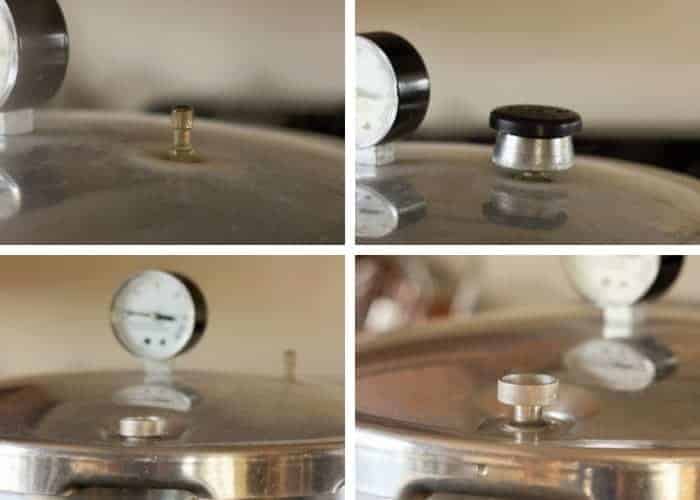
When the time is up, remove the canner from the burner and allow it to sit until you hear a distinctive “click” of the air vent dropping.
Remove the pressure regulator and carefully remove the lid of the canner (Pro tip: I always use oven mitts when I take the lid off because the steam is super hot). Let the jars sit in the canner with the lid of the canner off for 5 minutes.
Place hot jars on a towel where they can sit undisturbed for 12 hours.
After a few hours, to check for sealing, gently press down in the middle of the lid. If the lid has no give, it’s sealed. If you can press the lid in and it pops a bit, your jars are not sealed.
Help! Why are my jars leaking water?
If you find that water has leaked out after your jars have sealed, you have experienced a common canning issue called siphoning. It happens to the best of us!
Siphoning is typically caused by not allowing the jars to rest in the canner after they have finished processing. In the directions, you’ll see that I recommend you remove the canner from the burner, remove the lid of the canner, and let it sit for 5 minutes.
This is important as it allows the jars time to rest before being allowed to cool on the counter. Doing this process will significantly cut down on siphoning.
IF YOU HAVE SIPHONING IN YOUR JARS, FOLLOW THESE STEPS:
- Check – are the lids still sealed?
- Look – have you lost less than half of the amount of liquid in the jar?
- Examine – do the carrots still look fresh with bright colors?
If the answer to the above three steps is “yes!”, then they are safe to eat.
Pro Tips/Recipe Notes
- You can add salt to each jar prior to canning it. Use pickling salt and add 1 tsp per quart. Personally, I find the unsalted version easier to use in recipes because it allows me to control the overall sodium.
- Pressure canners can often leave white lines on lids and rings. It’s totally normal and safe. To prevent this, add 1/3 cup of white vinegar to the canner before processing.
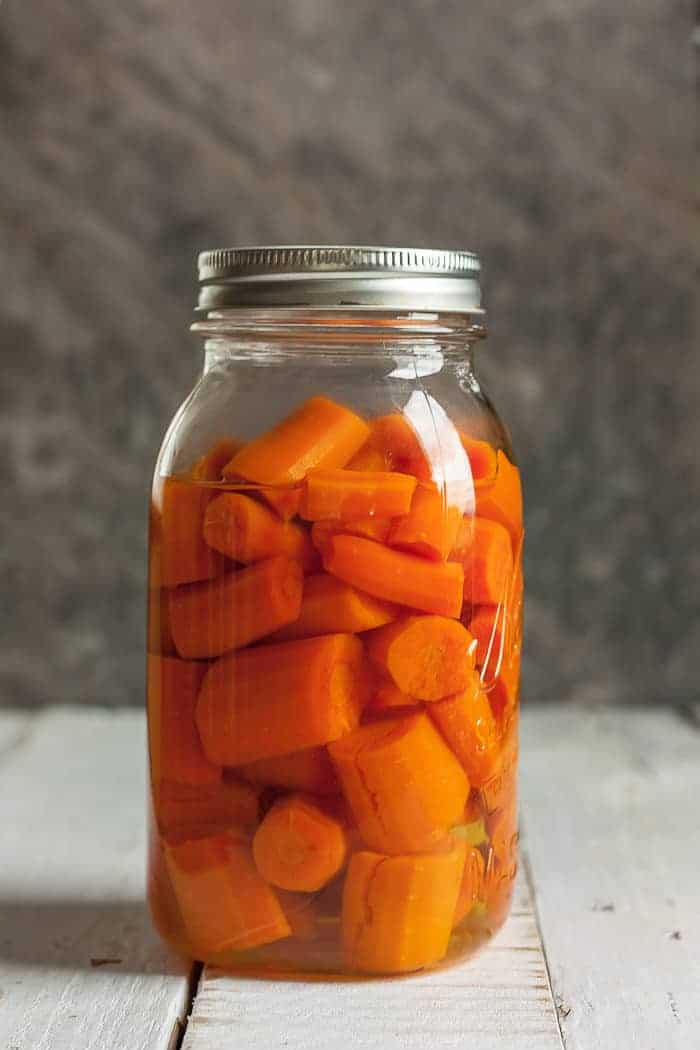
How to Can Carrots
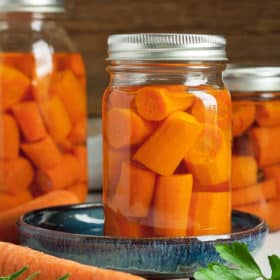
Equipment
Ingredients
- 18 lbs carrots
- 8 cups water {+ more for the canner}
Instructions
- Wash and sanitize your jars. You’ll want to keep them warm to avoid having them crack when placed in the canner. You can fill them with hot water, or place them on a tray in the oven at 170˚F.
- Wash your lids and set aside in clean place.
- Cut the tops off the carrots. Rinse and peel, and then rinse again.18 lbs carrots
- HOT PACK: If you are hot packing your carrots, add them to a pot of boiling water and let them cook for 5 minutes.
- RAW PACK: If you are raw packing, allow 8 (ish) cups of water to come to a boil in a pot or kettle.8 cups water
- Add 3 quarts of water to your pressure canner and put it on a burner set to high. Make sure there is a canning rack in the bottom of the canner.
- Using a canning funnel, add the carrots to the jars. You really want to pack them in there. Pro tip: wiggle the jar often as you add the carrots to allow them to settle and make room for more.
- Carefully and slowly add the clean boiling water, leaving 1-inch of headspace. Headspace is the distance between the top of the food and the top of the jar.
- Using a long utensil (I prefer a plastic chopstick), remove all the air bubbles from the jar.
- Clean the rim of the jar very well with a hot damp rag.
- Place a clean lid on the jar. Add a ring, and tighten to fingertip tight.
- Using canning tongs, gently place the jars in the canner.
- Lock the lid. Soon, steam will start coming through the vent pipe. Allow the steam to pass through for about 10 minutes. Then put the pressure regulator on top.
- Pretty soon, the air vent will pop up.
- In a dial-gauge pressure canner, process pints and quarts based on the elevation guide below (see processing chart in post for additional altitude adjustments):*0-2,000f ft {PSI: 11 lbs of pressure} = Pints 25 min, Quarts 30 min*2,001-4,000k ft {PSI: 12 lbs of pressure} = Pints 25 min, Quarts 30 min*4,001-6,000k ft {PSI 13 lbs of pressure} = Pints 25 min, Quarts 30 min*6,001-8,000k {PSI 14 lbs of pressure} = Pints 25 min, Quarts 30 min
- When the dial gauge reaches the appropriate PSI, reduce the burner temp to medium, and start your timer. The pressure must stay at the PSI or (a little bit) above for the duration of the cooking time. You’ll likely need to adjust the temp on the burner a few times depending on your stove.
- When the time is up, remove the canner from the burner and allow it to sit until you hear a distinctive “click” of the air vent dropping. Remove the pressure regulator and carefully remove the lid of the canner (Pro tip: I always use oven mitts when I take the lid off because the steam is super hot).
- Let the jars sit for 5 minutes in the canner with the canner lid off and then lift them out with canning tongs. Pro tip: allowing the jars to sit in the canner with the (canner) lid off can help reduce the siphoning of liquid in your jars.
- Remove with canning tongs and place on a towel where they can sit undisturbed for 12 hours.
- After a few hours, to check for sealing, gently press down in the middle of the lid. If the lid has no give, it’s sealed. If you can press the lid in and it pops a bit, your jars are not sealed.
Notes
- You can add salt if you’d like to:
- Quarts: Salt (optional) 1 tsp
- Pints: Salt (optional) 1/2 tsp
- 17 1/2 lbs carrots per 7 quarts, or 11 lbs carrots per 9 pints.
- Once the jars have sealed, remove the rings. Label and store sealed jars in a cool (best results are 50-70˚F) dark place for up to 12-18 months.
Nutrition
Nutrition information is automatically calculated, so should only be used as an approximation.
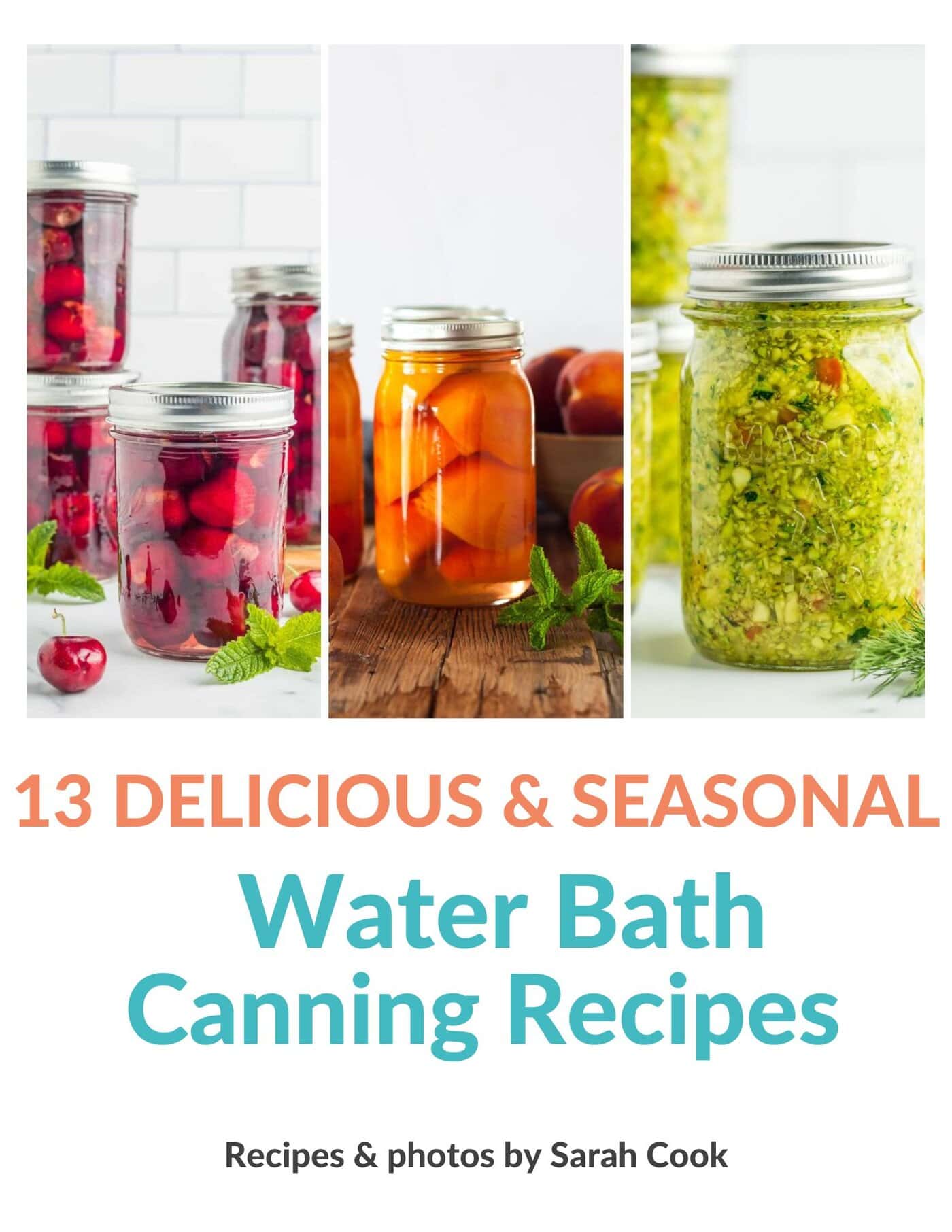
Get my Canning e-book!
It’s 51 pages of every helpful tip and trick you could want as a brand new canner, AND it includes 13 ad-free canning recipes that are designed to take you from novice to pro.
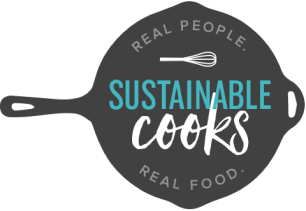

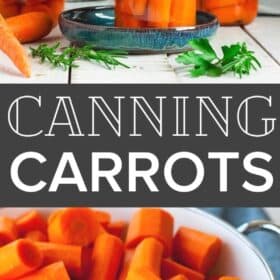
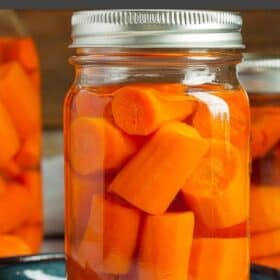
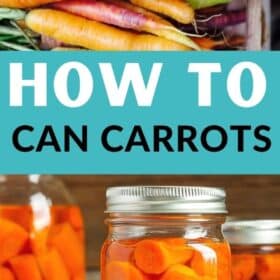

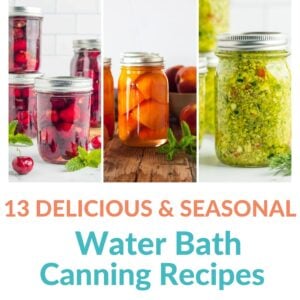
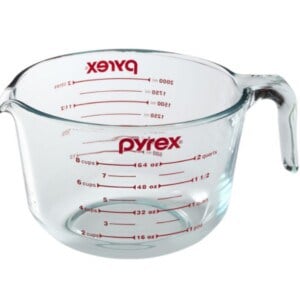
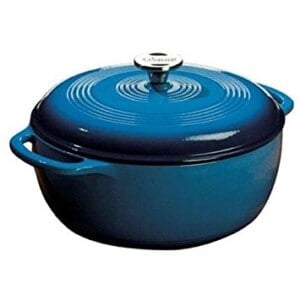
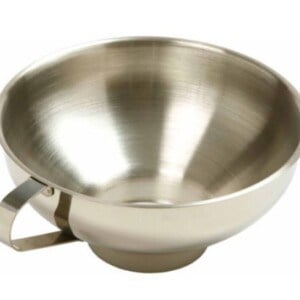
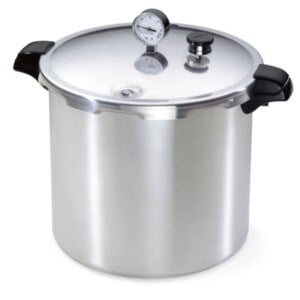
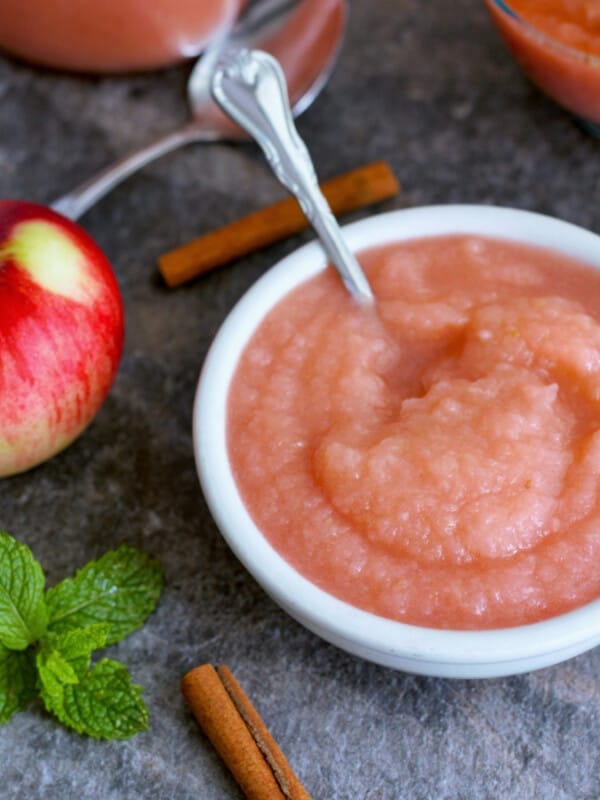
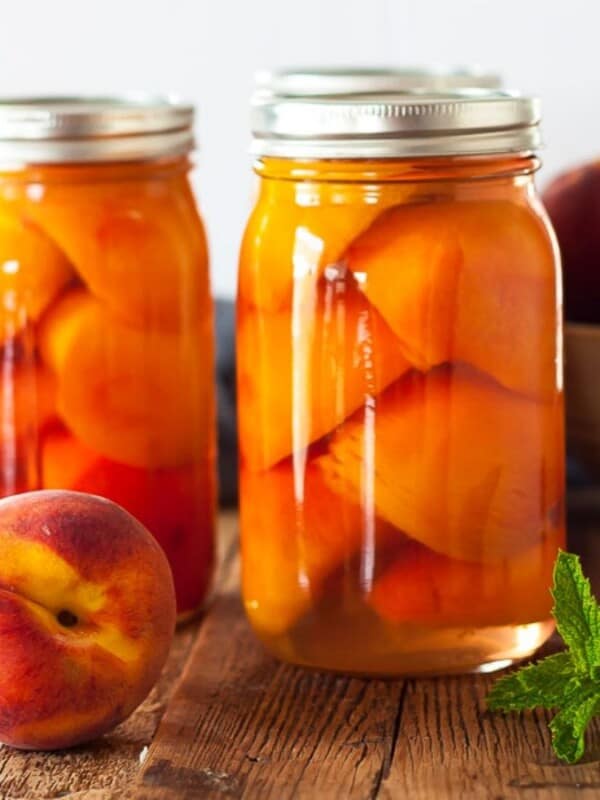
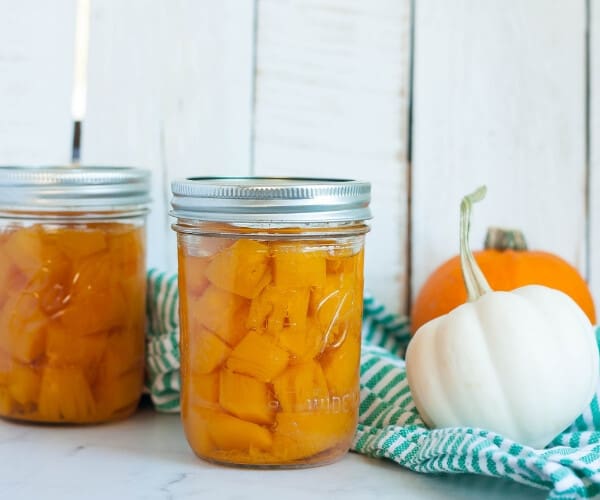
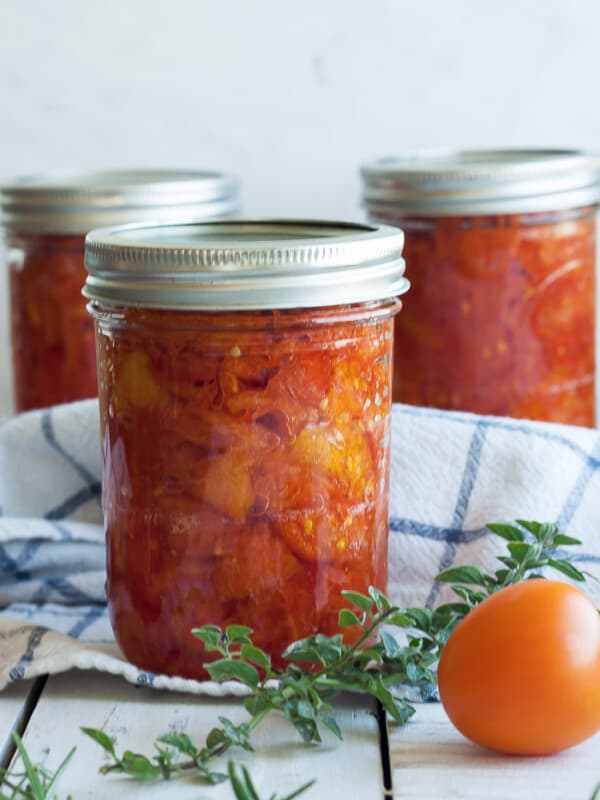
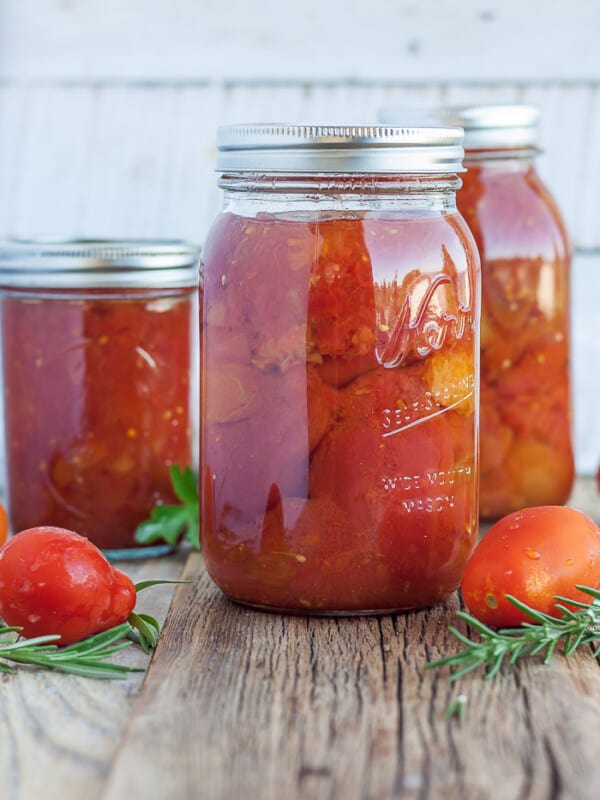
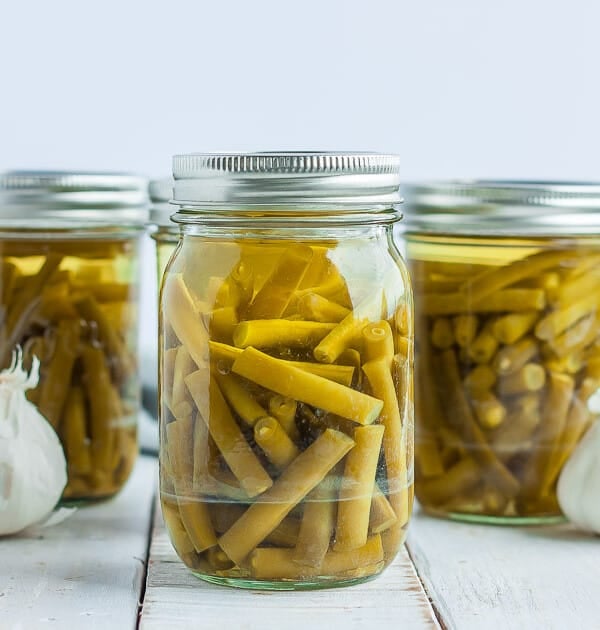






I only do wb. How long for pints.
Hi Beverly, you cannot safely can carrots in a water bath canner. Therefore, I am unable to advise you on processing times.
Freezing the carrots may be a better option for you. I have a tutorial on that here.
Can you do less time in the pressure cooker? I prefer them with a little more crunch and I find that they are too soft after canning.
Unfortunately, the canning time is needed for safe storage.
Yo! In canning carrots, is it ok to add a sprig of cleaned fresh Rosemary? I’ve read and read and have come to learn conflicting info. Some say no fresh herbs others indicate dried is okay. Your thoughts/advise?
Eddee, I’ve searched all my canning books and The National Center for Home Food Preservation site and cannot find a single recipe that involves leaving a whole sprig of rosemary in the jar when canning. I found plenty with chopped fresh parsley, basil, and oregano though.
Ball Canning does have a recipe for Fig Rosemary jam that is canned in a water bath canner, but the instructions call for you to cook the jam with the rosemary and then discard it before canning. You can find the recipe here: https://www.freshpreserving.com/blog?cid=fig-rosemary-and-red-wine-jam-ballr-recipes
When it comes to food safety, I don’t mess around, so I cannot recommend you add the rosemary and can carrots with the sprig in there. However, I suppose you could add rosemary to the carrots while blanching them to flavor the water as long as you discard it before canning.